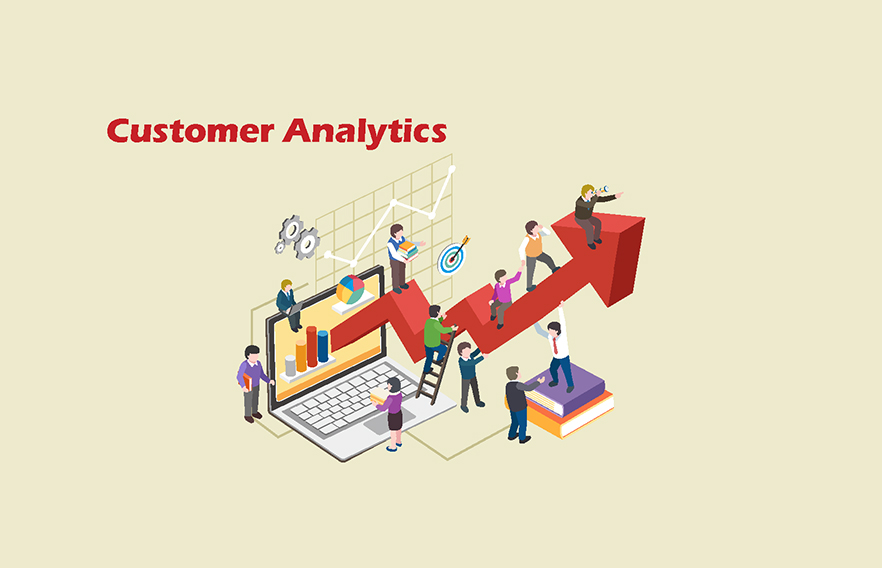I recently had the opportunity to moderate a panel discussion at the Argyle Executive Summit’s Leadership in Digital Marketing conference in New York. The topic of the panel was, “How analytics can be used to better cater to the multi-touchpoint consumer.” I was joined on the panel by Paul Butcher, Head of Digital Communication at Citibank, Clay Stobaugh, Chief Marketing Officer at John Wiley & Sons, Vicky Robertson-Mack, Marketing Director at Sears Home Services and Carol McNerny, Senior Vice President- Marketing Strategy, Insights and Analytics at Pitney Bowes. It was a great discussion that saw the thought leaders put forth a number of interesting viewpoints that cut across industries. A synopsis of the conversation forms the basis of this blog post.
A recent McKinsey study found that the probability of a brand being chosen is directly proportional to the number of digital touchpoints it has with a consumer. What exactly is a customer touchpoint? Wikipedia defines it as an interface of a brand (product or service) with customers before, during and after a transaction. But my favorite description is, “a moment of truth.” It is the point at which a customer forms an impression, often a lasting one. As marketers, that touchpoint becomes our single most important tool.
When talking about multi-touchpoint customers, it is important to remember that customers do not want to be defined by a channel. A customer engages with you to achieve something, be it a product purchase or an experience. In the course of that journey, they will reach out to you in whatever way they find convenient and as marketers, it is our role to understand that end-goal and help the customer achieve it, seamlessly and consistently.
So, is there an optimum number of interactions a marketer should aim to have? This is completely based on the consumer. Our role is to ensure the brand is available to engage and provide the right offer or information. The consumer will decide when they want to engage and what they want to talk about. This is one of the most powerful applications for analytics.
By analyzing digital data, we know what stage of purchase a consumer is in and when they engage, we’re able to ensure they get what they are looking for. We’re able to provide them with customized experiences. And, just as importantly, we’re able to measure every interaction at each touchpoint.
So, what should we measure? Is there one right metric or should we be looking at multiple things? In order for analytics to enable an organization, the panel suggested we follow a three stage process – Mindset, Toolset, Skillset. The first step, Mindset, is about defining what it is that the organization is trying to achieve. Individual departments should not be allowed to set their own KPIs and metrics that are only relevant to their own environments. Only once everyone is streamlined to the same metrics, should we look at tools and build the required skills.
If your goal is to optimize consumer experience across channels, you need to ensure that is what you are measuring across departments. This is where dashboards play acrucial role; they bring a certain discipline into an organization and help create a away for different constituents within companies to all view the same metrics, the same way.
As analytics partners, we work with companies at various stages of the analytics curve. The ability to get an entire organization to measure the same set of metrics to determine success and to use the same sources of data in doing so, is one of the marks of a highly mature organization.
When it comes to B2B businesses, does any of this change? Our panel said “not really”. Even in a B2B business, it’s still a person making the decision to purchase. B2B companies need to become more client-centric and realize that different things are going to appeal to different people, even if they are from the same company. It is still about making them the right offer at the right time.
The Challenges
Across the board, the panelists agreed that data availability is often a big challenge, especially for companies that do not sell directly to the end-consumer (CPG, for example.) Even so, data quality is often a serious concern. It is important to understand what the source of bad quality data is and to fix it. It might involve, for example, making the sales organization understand the importance of collecting complete customer data.
Another big challenge in a multi-touchpoint environment is in ensuring that positive brand associations remain consistent, across channels. Simply put, this translates to ‘ensuring trust.’ For example, Sears Home Services customers trust the brand enough to let a stranger into their homes to fix an appliance. That’s a huge responsibility for the people who manage the brand. They are very aware that they need to ensure that level of trust across every other touchpoint as well. Consistency is key in a multi-touchpoint environment.
In summary, analytics can help marketers understand consumer preferences and their stage of purchase, thereby making it easier to have meaningful interactions at various touchpoints. It can also help marketers measure and maintain consistency across these touchpoints. In today’s world, the journey of customer conversion is multi-device, multi-channel and multi-screen; this makes the multi-touchpoint experience the go-to metric for high impact marketing strategies.




